

A glorious cycle was drawing to an end after two defeats in two different European Cup finals against Benfica and Inter Milan, respectively. The decline of the players that had thrilled the whole of Europe ended with their departure from the Club. Miguel Munoz’s generational reshuffle was eventually successful. The so called “Yé-Yé” team regained the European crown by winning the Club’s sixth European Cup.
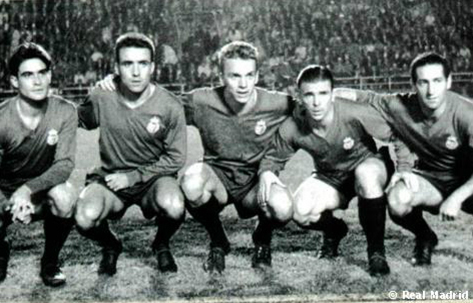
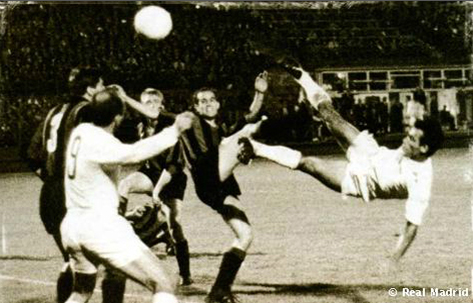
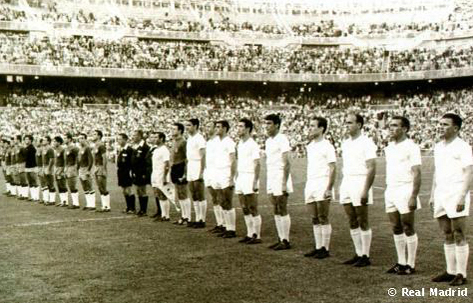
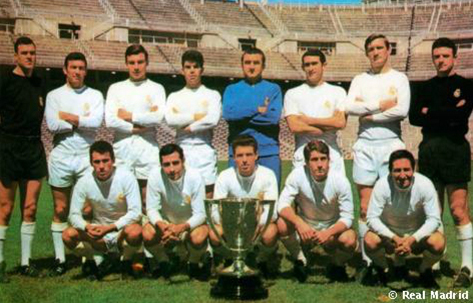
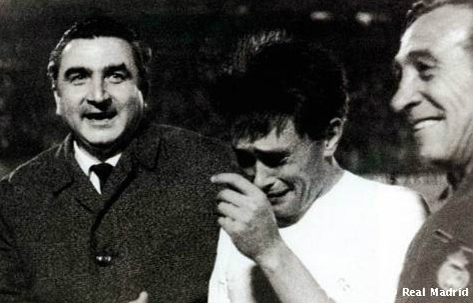
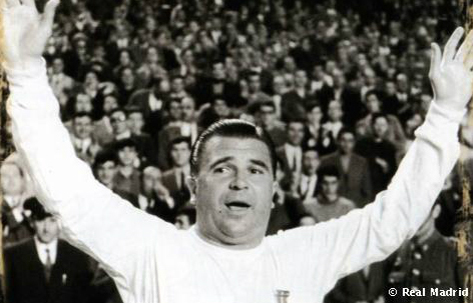
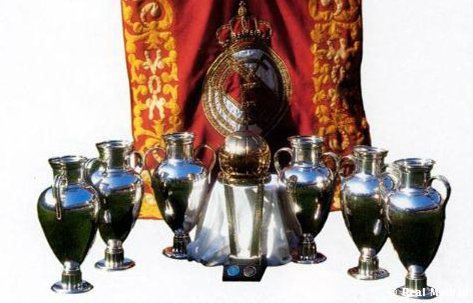
MADRICIDE AGAINST BARCELONA
Real Madrid were eliminated from the European Cup for the first time in November 1960 against Barcelona. English referees Ellis and Leafe played a big role in the Madridista defeat. The former allowed an unfair penalty to Barcelona at the Bernabéu and the match eventually ended with a 2-2 score. The latter disallowed four Real Madrid goals at the Camp Nou and Barcelona won 2-1. The international press heavily criticised Ellis and Leafe’s performance and coined the term Madricide to describe Real Madrid’s unjust elimination.
EXHIBITION AT MARACANÁ
On 8 February 1961, the Whites played at Maracaná Stadium for the first time. They faced Vasco da Gama and earned a 2-0 score before half-time thanks to goals by Del Sol and Canario. Real Madrid were tired in the last 45 minutes and the game eventually ended in a 2-2 draw.
SEVEN MADRIDISTAS IN THE 1962 WORLD CUP
Pablo Hernández Coronado was the Spanish national coach for the Chile 1962 World Cup. He stirred up some controversy by not including Amancio on the squad list, but nevertheless called up Di Stéfano, Santamaría, Puskas, Pachín, Del Sol, Gento and Araquistain. Unfortunately, Di Stéfano got injured and had to miss the tournament.
DI STÉFANO KIDNAPPED FOR THREE DAYS
Alfredo Di Stéfano was kidnapped at the Potomac Hotel in Caracas, where Real Madrid were staying during the World Club Championship. He was taken away the night of the 21 August 1963 by the Liberation Front of Venezuela. “I thought they were going to kill me,” wrote the player in his autobiography Gracias, Vieja. The kidnapping had great impact and his captors got the publicity they wanted. Di Stéfano was freed three days later.
THE FIRST REAL MADRID CITY IS INAUGURATED
The 1956 General Assembly approved the construction of the first Real Madrid City. The grounds were inaugurated seven years later thanks to Real Madrid Vice-president Álvaro Bustamante, who promoted the idea. The opening took place on 18 May 1963. A very important international athletics meeting took place as part of the inauguration.
DI STÉFANO'S BITTER FAREWELL
On 27 June 1964, Alfredo Di Stéfano played his last official match as a Real Madrid man at Vienna’s Prater Stadium against Inter Milan in the ninth European Cup final, which the Italian side won 3-1. Di Stéfano had a confrontation with coach Miguel Munoz and Santiago Bernabéu took the latter’s side. The President offered the player to stay at the Club to do other jobs, but he refused and signed for Espanol.
FIVE CONSECUTIVE LEAGUE TITLES... AGAIN
Real Madrid are the only side to have won the League five consecutive times twice in the competition history. The first time they achieved this was between the 1960/61 and 1964-65 seasons and they repeated the feat between the 1985-86 and 1989-90 seasons. No other Spanish team has been able to break this record.
THE "YÉ-YÉ"S CROWN THEMSELVES AS EUROPEAN CHAMPIONS
Miguel Munoz’s generational reshuffle of the team in 1964 was successful two years later. On 11 May 1966, Real Madrid won their sixth European Cup title at Brussel’s Heysel Stadium against Partizan Belgrade, whom they defeated 2-1. This was the “Ye-Ye” team. “Ye-Ye” was how youngsters were called in Spain in the Sixties, especially those who looked like the Beatles. The team back then was formed by Araquistain; Pachín, De Felipe, Sanchís; Pirri, Zoco; Serena, Amancio, Grosso, Velázquez and Gento.
A TRIBUTE TO THREE EXCELLENT PLAYERS
Three tribute games were held to honour three legendary players at the end of the Sixties: José Emilio Santamaría (15-9-66), Alfredo di Stéfano (7-6-67) and Ferenc Puskas (26-6-69). The threesome were already a symbol of Real Madrid greatness and of the Club’s history. The three became coaches at the end of their careers. Needless to say, the crowd gave them an incredibly warm ovation.